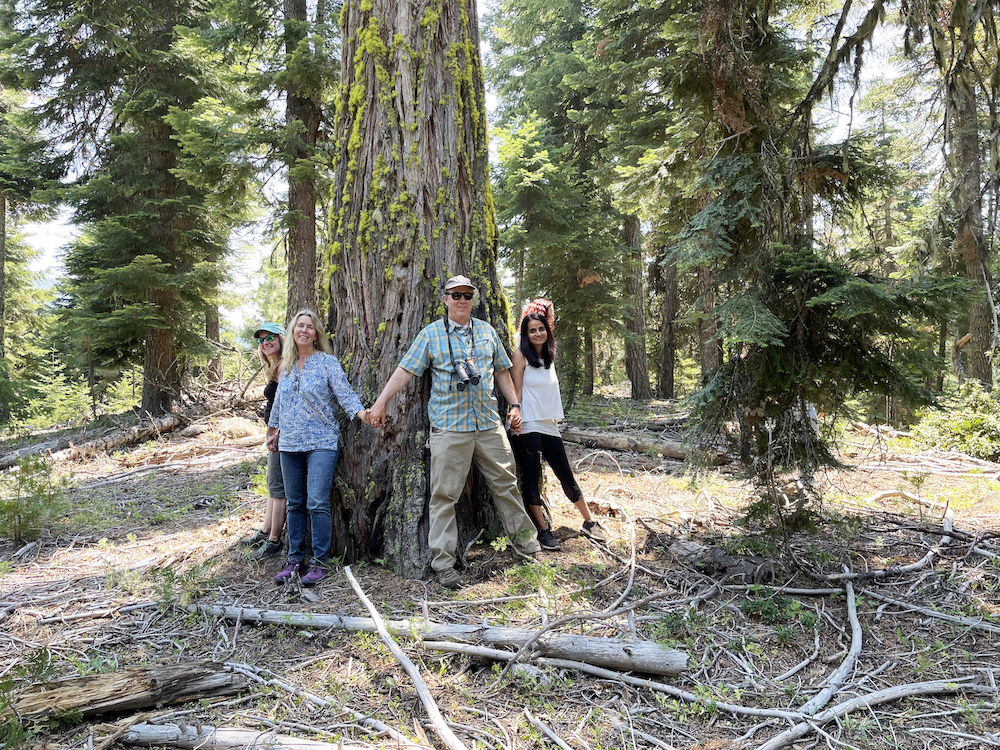
Fall 2021 ForestLife
Conserving Mount Ashland, Managing for Climate Resistance
PFT is in the midst of an exciting, ambitious effort to acquire, protect, and restore a stunningly diverse forest on the slopes of Mount Ashland, building on decades of conservation work along the Siskiyou Crest.
Southern Oregon’s Siskiyou region is home to highly biodiverse, globally important lands, as recognized by the Cascade Siskiyou National Monument (CSNM). The lands surrounding the CSNM, especially to the west, have an extraordinarily diverse suite of habitats as well, changing as the elevation, soils, and aspect change. Conserving and connecting the span of the Siskiyou Crest is a long-term goal for PFT, ensuring that this amazing array of plants and wildlife have an unbroken, connected safe passage from east to west, and north to south, crossing public and private lands. With advancing climate change warming the region, this mid-elevation forest is even more important as a refuge for myriad species on the move.

The Mt. Ashland Forest has rare old growth resources important for people and wildlife.
In 2020, PFT entered into an agreement with Chinook Forest Partners to purchase this highly diverse forestland along the Siskiyou Crest, along with another 555 adjacent acres. (We conserved that 555 acres at the end 2020.) We are now raising funds to complete the acquisition of the remaining 1,120 acres. (We thank the Resilient Lands Program of the Oregon Community Foundation and the Land Trust Alliance for an initial grant helping fund this purchase!) Acquiring this property will significantly expand the conserved corridor from the CSNM to the Rogue River-Siskiyou National Forest.
Restoring and managing the property’s forest, meadows, and woodlands will help them be more resilient to wildfires. As the devastating 2020 Almeda Fire illustrated, this area is fire prone and at high risk of increased fire with climate change. We will be managing for “good fire” to mitigate that risk, including the use of cultural burning. This and other Traditional Ecological Knowledge (TEK) approaches can help restore forests to a more climate adaptive, resilient state.
Restoring more natural forest function and resilience also benefits the great biodiversity and water resources. The forest hosts a rich array of habitats supporting northern spotted owl, Coho salmon, and gray wolf — all listed under the Endangered Species Act. Dozens more rare or imperiled species such as the Humboldt marten, Pacific fisher, western pond turtle, and northern goshawk also benefit. Its cold-water springs feed wet meadows and creeks, including Neil Creek, benefitting Ashland’s watershed, as well as its viewshed.
With our “forever” approach managing this demonstration forest, we have the opportunity to provide sustainable forest-based jobs, learning opportunities, and partnerships with a range of diverse stakeholders. We look forward to sharing more exciting news with you as we reach our goal of acquiring and stewarding the Mt. Ashland Forest!
If you’d like to help, please contact Glenn Fee at gfee@pacificforest.org
